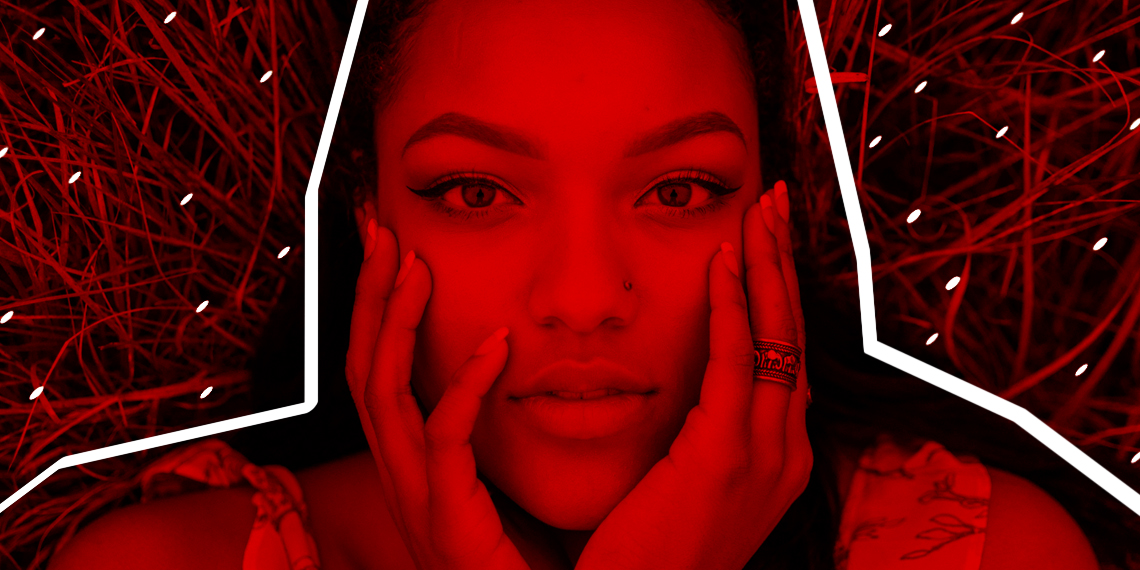It’s no secret by now that I’m a fan of high-tech beauty hacks. So when I was offered the chance to write about red light therapy, I dove in—despite having absolutely no idea what it was. 48 hours later, I’m semi-seriously considering taking out a loan to buy a Joovv Elite and converting a wall of my (tiny) apartment into a red light therapy studio. (Don’t worry, I’ll explain what a Joovv is, my uninitiated friends.) But first, a rundown of WTF red light therapy actually is, how it works, and how quickly whether you should do it.
What Is Red Light Therapy?
Red light therapy is, in the end, very much what it sounds like: a form of therapy for your body using red light. To be more specific, using wavelengths of red and near infrared light, and to be psychotically specific, using red light “in the mid-600 nanometer range” and near infrared light “in the mid-800s.” (You do not need to understand these words in order to reap the benefits. But should you, for example, have a very irritating boyfriend who demands to know the science behind all your beauty treatments, you can now cite those numbers for him.) These wavelengths penetrate “roughly 5 millimeters below the skin’s surface,” stirring up all kinds of sh*t in your cells without damaging the surface of your skin. A win in my book.
How Does Red Light Therapy Work?
The reason such specific wavelengths are required is that you’re going after a very specific effect: to strengthen the mitochondria in your cells. I’ve been waiting my entire adult life to use this fact that I learned in middle school, and here it is: the mitochondria is the powerhouse of the cell. Unfortunately, my understanding never went far enough to know what that means, so I dove back into my research. According to Healthline, the mitochondria creates energy, or energy-carrying molecules called ATP (adenosine triphosphate. Do I have a PhD yet?). When red light stimulates the mitochondria, it creates more ATP—and with more ATP, cells have more energy to get sh*t done.
https://twitter.com/keelyflaherty/status/977349711114862592[/embed]
What Does Red Light Therapy Do?
To get a more nuanced view of red light therapy’s effects, I spoke to Lindsay Malachowski, the Director of Operations at SKINNEY Medspa. First, I ran the effects I was most hoping were true by her: the wonders red light therapy is meant to perform for your skin. According to Joovv, a company offering at-home red light therapy devices, RLT is clinically proven to boost collagen production, reduce inflammation and redness, and improve the appearance of wrinkles. (I am aware that clinically proven implies there are clinical studies I could read. I prefer a more human approach.) When I asked Malachowski about these claims, she confirmed them as true—with some caveats.
Red light therapy, Malachowski explains, is “the most gentle form of photodynamic therapy:” AKA it’s effective, but not going to get you the most dramatic results. Because it’s LED rather than laser, and doesn’t work directly on the surface of the skin, it provides less “significant changes” than a laser treatment like Fraxel or IPL. That’s not to say RLT is useless—Malachowski specifically states that it’s an effective treatment to reduce redness, inflammation, breakouts, and eczema, with the added benefit of having no downtime afterward. Finally, while she affirms that red light therapy “does stimulate collagen,” she notes that here, too, it’s not the most dramatic treatment available on the market. (For that, she recommends non-invasive ultrasound or radio-frequency like Ultherapy.)
When I next asked Malachowski about red light therapy’s weight loss and fat reduction effects, she was notably less enthusiastic. According to her, there’s “little scientific evidence” supporting those particular claims. She doesn’t have much more to say about that, except to recommend CoolSculpting or EmSculpt to those looking for those results.
https://www.instagram.com/p/BvUdkY6gDAq/[/embed]
When I spoke to Joovv’s cofounder, Scott Nelson, he directed my attention to a whole other side of red light therapy benefits: namely, those that don’t immediately appear in the mirror (sue me, I’m vain). When I asked which groups of people would benefit most from red light therapy, he mentioned immediately that it can lead to “better-looking skin,” but he also mentioned people suffering from joint pain, trouble sleeping, or struggling with muscle recovery. He also mentioned that “elite athletes” use red light therapy to achieve “that edge” when it comes to increasing their performance or cutting down their recovery time. For what it’s worth, Joovv’s clients do include pro athletes Zach Johnson, Anthony Pettis, and Duncan Keith. As for better sleep, he says that using red light therapy “on a regular basis” will quickly improve sleep quality and REM cycles.
So, Where Do I Get It Done?
Good question! Certain salons and spas offer red light therapy treatments, including SKINNEY MedSpa. (It’s not offered as a service on its own, but it’s a 20-minute portion of their Hi Tech Facial, and they also offer it after Botox, filler, and Fraxel treatments to speed up healing.) Other treatment settings might include lying in a red light therapy bed for 20 minutes, offered by aesthetician Mzia Shiman in NYC.
If you’re looking for an at-home version (a phrase I’ve always personally been happy to hear), Joovv sells red light therapy devices in sizes ranging from purse-friendly to a six-foot-tall wall-mounted model. For these, Nelson recommends a daily treatment of 8-10 minutes, standing three to six inches from the device. When I asked how quickly you saw results (I’m impatient, okay?), he let me know that effects like pain and inflammation relief could be seen in a single session. Effects on the skin, however, would take up to 4-6 weeks of daily treatment.
https://www.instagram.com/p/Bv2NnqlD1f0/[/embed]
So, will I be marching out to begin my 4-6 weeks of dedicated red light therapy? Honestly, definitely, but I’m not a hard sell on products that promise to solve all my problems. While experts may not agree on all the effects of red light therapy, there does seem to be substantial scientific evidence that it’s a useful treatment for skin quality, pain relief, and improved sleep. Other claims you can test for yourself, and write blog posts about if you so choose. But if this treatment is even half as effective as the clinical trials supporting it would suggest, I’d say it’s definitely worth a shot.
Images: @skinneymedspa, @jolenegoring / Instagram; @keelyflaherty / Twitter








































